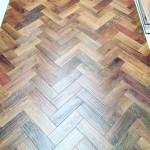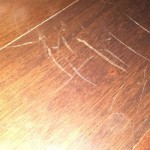For many homeowners, hardwood floors are a desirable feature that adds beauty and value to their home. Sanding a hardwood floor is a necessary step in refinishing the floor and can help to restore its former glory. Doing it right can make a huge difference in the look of the floor, but it’s important to know what you’re doing and to follow the proper steps.
Preparing to Sand
Before you begin sanding, there are a few things you should do to prepare. First, make sure the room is completely empty of any furniture or other items. If you have any furniture that can’t be moved, cover it with a plastic sheet. You’ll also want to make sure the room is well-ventilated as the dust created during sanding can be hazardous to your health.
You’ll also need to make sure the floor is clean. Sweep and mop the floor to remove any dirt, dust, and debris. You’ll also want to look for any cracks, holes, or other areas of damage and make sure to fill them in with putty or other filler. Once the floor is clean and prepped, you’re ready to begin sanding.
Choosing the Right Sanding Equipment
When it comes to sanding a hardwood floor, the right equipment is essential. You’ll need a drum sander, edger sander, and sandpaper. For the drum sander, you’ll want to choose a model with variable speed settings, so you can control the speed of the sanding and reduce the risk of gouging the floor. The edger sander is used to get into corners and tight spaces and should have a dust collection system.
You’ll also need to choose the right type and grit of sandpaper. The type of sandpaper you choose will depend on the type of floor you’re sanding. For example, if you’re sanding an oak floor, you’ll want to use an aluminum oxide sandpaper. For a maple floor, you’ll want to use a silicon carbide sandpaper. As for grit, you’ll want to start with a coarse grit and work your way up to a finer grit.
Sanding the Floor
Once you’ve chosen the right equipment and sandpaper, you’re ready to begin sanding. Start with the drum sander and use a sweeping motion to sand the floor. Be sure to keep the sander in motion to avoid gouging the floor. Work your way across the floor and change the sandpaper as needed. Once you’ve finished with the drum sander, use the edger sander to get into corners and tight spaces.
Once you’ve finished sanding, use a shop vacuum or dust mop to remove any remaining dust and debris. You may also want to use a damp mop to further clean the floor. Once the floor is clean, you’re ready to apply a finish.
Conclusion
Sanding a hardwood floor is an essential step in refinishing the floor and restoring its beauty. It’s important to take the necessary steps to prepare the room and ensure you’re using the right sanding equipment and sandpaper. With the right preparation and tools, you can sand your hardwood floor and bring it back to its former glory.


:max_bytes(150000):strip_icc()/sanding-hardwood-floors-overview-1821895-hero-ceb212faa94b4952997fc95f2672672a.jpg)












Related Posts








